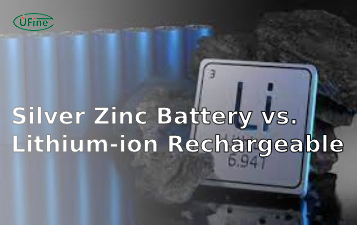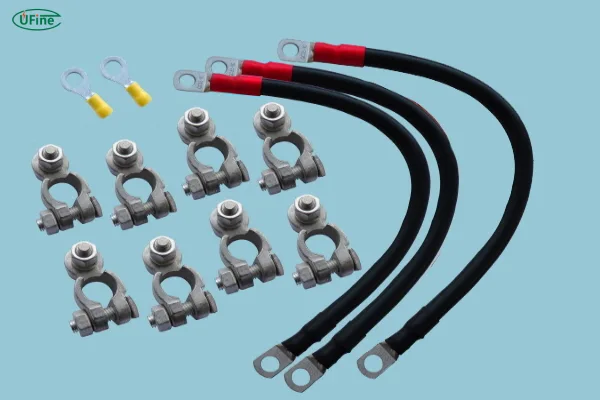
- Part 1. Why battery wire connectors are the unsung heroes of power systems
- Part 2. What are battery wire connectors?
- Part 3. Types of battery wire connectors
- Part 4. How to choose the perfect battery wire connector
- Part 5. Crimping vs. soldering: which method wins?
- Part 6. How to properly secure battery connectors
- Part 7. Common mistakes and how to avoid
- Part 8. Where to buy reliable battery connectors?
- Part 9. Final words
Part 1. Why battery wire connectors are the unsung heroes of power systems
Let’s be honest—most people don’t think twice about battery wire connectors until something goes wrong. But here’s the hard truth: a poor-quality connector can turn a perfectly good battery into a ticking time bomb. Imagine your electric vehicle suddenly losing power on the highway, your solar setup failing during a storm, or worse—a loose connection sparking a fire.
That’s why choosing the right battery cable connector isn’t just a minor detail—it’s a make-or-break decision for safety, efficiency, and longevity. Whether you’re an automotive enthusiast, a solar energy installer, or an industrial equipment engineer, this guide will take you deep into the world of battery connectors—far beyond the superficial advice you’ll find elsewhere.
And if you’re looking for high-performance lithium batteries to pair with your connectors, Ufine Battery is a trusted custom lithium battery manufacturer specializing in lithium polymer batteries, LiFePO4 batteries, 18650 cells, ultra-thin batteries, and high-rate/high-temperature batteries—all customizable to your exact needs.
Part 2. What are battery wire connectors?
The Critical Role of Battery Wire Connectors
Battery wire connectors are the bridge between your battery and the device it powers.
They ensure:
✔ Secure electrical contact—preventing dangerous arcing or voltage drops.
✔ Mechanical stability—keeping wires firmly attached even under vibration.
✔ Corrosion resistance—protecting against moisture and oxidation.
Where Are They Used?
-
Automotive: Starter batteries, EVs, and auxiliary power systems.
-
Marine & RV: Harsh, moisture-rich environments demand waterproof connectors.
-
Solar & Off-Grid Power: High-current handling for solar battery banks.
-
Industrial Machinery: Heavy-duty applications requiring rugged, long-lasting connections.
Pro Tip: If you’re using a custom lithium battery from Ufine Battery, ensure your connectors match the battery’s discharge rate and terminal type for optimal performance.
Contact Ufine Battery today for a battery that perfectly fits your project—and pair it with the right connectors for unbeatable performance!
Part 3. Types of battery wire connectors
Not all connectors are created equal. Here’s a detailed comparison of the most common types:
A. Ring Terminals (The Gold Standard for Permanent Connections)
-
Best for: High-current applications (car batteries, industrial equipment).
-
Key Features:
-
Bolt-on design prevents loosening.
-
Available in tinned copper for corrosion resistance.
-
Sizes range from #6 to #10 AWG (or larger for industrial use).
-
-
Drawbacks: Requires proper crimping tools for a secure fit.
B. Spade Connectors (The Quick-Connect Solution)
-
Best for: Semi-permanent connections (stereos, lighting systems).
-
Key Features:
-
Fork-shaped design for easy insertion/removal.
-
Ideal for tight spaces where ring terminals won’t fit.
-
-
Drawbacks: Can vibrate loose—not ideal for high-shock environments.
C. Bullet Connectors (The Plug-and-Play Choice)
-
Best for: Motorcycles, ATVs, and portable electronics.
-
Key Features:
-
Male/female design for quick disconnects.
-
Often used in low to medium current applications (up to 30A).
-
-
Drawbacks: Not suitable for high-power systems like EV batteries.
D. Anderson Connectors (The Heavy-Duty Powerhouse)
-
Best for: Solar arrays, electric vehicles, and high-amp applications.
-
Key Features:
-
Handles 50A to 350A+ with ease.
-
Self-cleaning contacts for long-term reliability.
-
-
Drawbacks: Bulkier and more expensive than standard connectors.
E. Terminal Blocks (The Organized Multi-Wire Solution)
-
Best for: Control panels, industrial machines, and battery banks.
-
Key Features:
-
Allows multiple wires to connect to a single terminal.
-
Screw-clamp or spring-loaded options.
-
-
Drawbacks: Not ideal for high-vibration environments.
Types of Battery Terminal Connectors
Part 4. How to choose the perfect battery wire connector
Step 1: Match the Current Rating
-
Example: A 100Ah lithium battery discharging at 1C needs a 100A-rated connector (minimum).
-
Safety Margin: Always choose a connector rated 20-30% higher than your max current.
Step 2: Check Wire Gauge Compatibility
-
Rule of Thumb:
-
10 AWG wire → #8 ring terminal
-
4 AWG wire → 3/8″ lug
-
-
Mismatch Risks:
-
Too small → Overheating & melting
-
Too large → Loose connection & arcing
-
Step 3: Material Matters (Copper vs. Aluminum vs. Tinned)
| Material | Conductivity | Corrosion Resistance | Best Use Case |
|---|---|---|---|
| Pure Copper | Excellent | Poor (oxidizes quickly) | Indoor, dry environments |
| Tinned Copper | Very Good | Excellent | Marine, outdoor, humid conditions |
| Aluminum | Good | Moderate (cheaper but weaker) | Budget applications |
Step 4: Environmental Considerations
-
Waterproof? (Marine, RV, outdoor solar)
-
Heat-resistant? (Engine compartments, industrial machines)
-
UV-resistant? (Solar panel wiring)
Pro Tip: For Ufine Battery’s high-rate lithium batteries, always use high-temperature connectors if operating in extreme conditions.
Part 5. Crimping vs. soldering: which method wins?
Crimping: The Industry Standard
✔ Faster & more consistent (ideal for mass production).
✔ Better vibration resistance (critical for automotive/marine).
✔ Requires a quality crimping tool (cheap tools = bad crimps).
Soldering: The Old-School Approach
✔ Stronger electrical bond (if done correctly).
✔ Risk of cold joints (poor soldering = failure points).
✔ Not ideal for high-vibration (can crack over time).
Best Practice: For Ufine Battery’s ultra-thin lithium polymer batteries, a properly crimped connector is often the safest choice to avoid heat damage.
Part 6. How to properly secure battery connectors
Step 1: Strip the Wire Correctly
-
Use a wire stripper (not a knife!) to avoid nicking conductors.
-
Expose just enough wire to fit inside the connector.
Step 2: Crimp Like a Pro
-
Use a ratcheting crimper for consistent pressure.
-
Tug test: If the wire pulls out, re-crimp!
Step 3: Heat Shrink for Extra Protection
-
Prevents corrosion and strain on the connection.
Final Check: Measure resistance with a multimeter—anything above 0.5 ohms is suspect.
Part 7. Common mistakes and how to avoid
❌ Using undersized connectors → Overheating & failure.
❌ Ignoring corrosion → Increased resistance & voltage drop.
❌ Loose connections → Arcing, sparks, and fire hazards.
What Causes Battery Terminal Corrosion?
Ufine Battery Pro Tip: Always use anti-corrosion grease on terminals for long-lasting performance.
Part 8. Where to buy reliable battery connectors?
-
Top Brands: Amphenol, TE Connectivity, Anderson Power Products.
-
For Custom Batteries: Pair your Ufine Battery lithium cells with high-quality connectors for maximum efficiency.
Part 9. Final words
Your battery is only as good as its weakest link—and that’s often the connector. Whether you’re building an EV, solar setup, or industrial machine, invest in high-quality connectors that match your battery’s needs.
And if you need custom lithium batteries designed for your exact requirements, Ufine Battery offers tailor-made solutions with:
✔ Various chemistries (LiPo, LiFePO4, 18650).
✔ Custom sizes, voltages, and capacities.
✔ High-rate & high-temperature options.
Related Tags:
More Articles

What is the Difference Between Silver Zinc Battery vs. Lithium-ion Rechargeable?
Compare silver zinc and lithium-ion rechargeable batteries: energy density, cycle life, safety, cost, and uses in drones, medical devices, EVs, and electronics.
What are Watts and Watt Hours in Battery?
Understand watt vs watt-hour in batteries: key differences, how to calculate capacity, and why they matter. Includes free comparison table.
Best 10 Blood Pressure Monitor Battery Review: Finding the Most Reliable
Are you looking for a reliable Blood Pressure Monitor battery? Here is a complete guide with the top 10 best blood pressure monitor batteries.
Bluetooth Headphone Battery Guide: All You Need to Know
Maximize headphone battery life with expert tips! Learn how to charge, check, troubleshoot, and choose the best bluetooth headphone battery in 2025.
LiFePO4 Battery VS. Lithium-ion Polymer Battery: Which One Is Best?
Comprehensive comparison of LiFePO4 vs Lithium Ion Polymer batteries: energy density, safety, lifespan, cost. Find out which battery suits your needs in 2025.



